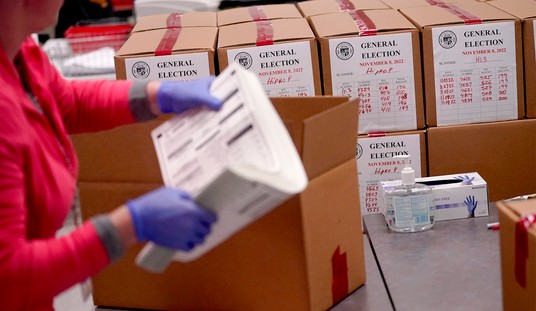The United States is producing more oil than it has in three decades. Our dependence on foreign petroleum has gone way down. And now, the Trump administration wants to sell off much of the government's emergency stockpile of oil.
This will come as a surprise to the millions of Americans who were unaware that the government has an emergency stockpile of oil. It brings to mind the country song: "How Can I Miss You When You Won't Go Away?" But we're not likely to miss it even if it does.
The Strategic Petroleum Reserves consists of oil stashed in salt caverns in Louisiana and Texas, solving the age-old puzzle of what to do with giant underground holes after you have taken the salt out of them. It amounts to 688 million barrels, which equals what we import in 141 days. The stash is there in case foreign supplies are cut off and we need oil to avert disaster -- or prices spike and we want to bring them down.
It was created in 1975 after the Arab oil embargo against the United States, which coincided with a decision by the Organization of Petroleum Exporting Countries to cut production and raise prices.
Long gas lines and economic disruption ensued. Americans, who were used to endless rivers of cheap fuel, suddenly felt terribly vulnerable. The reserve calmed fears by supposedly ensuring that oil exporters could never again use the oil weapon to punish us. If they tried, we could tap our hoard to foil them.
But the stockpile was based on a fallacy. It wasn't the embargo, the price increase or the production cutback that caused the chaos. It was the price controls imposed by President Richard Nixon, combined with the clumsy system the feds created for allocating supplies.
Recommended
The problem was that markets were not allowed to work normally. Had they been, the pain and disruption would have been far less.
When prices are allowed to rise and fall in response to changes in supply and demand, as they are today, there is no such thing as a shortage. If Saudi Arabia or Venezuela reduces its output, prices will increase and consumption will decline, a process that quickly equalizes supply and demand.
In the summer of 2008, world oil prices soared to more than $140 a barrel -- but not for long. The increase fattened profits, which encouraged more production, which expanded supplies, which reduced prices. By the end of the year, oil was fetching just $30 a barrel.
Eventually, prices crept up, only to slide back down. Lately, the going rate has been around $50 a barrel, with prices at the gas pump in the neighborhood of $2.40 a gallon on average.
Americans have learned to adapt. There has rarely been a popular outcry to tap the reserve. "A Presidentially-directed emergency release has occurred twice in the history of the SPR," says the Energy Department. Even in 2008, when prices hit a record, President George W. Bush didn't use the reserve to bring them down.
So what's the point of having it? Maintaining fuel in storage is not free. A 2007 Cato Institute paper by Jerry Taylor and Peter Van Doren put the cost to taxpayers at between $65 and $80 per barrel -- and the figure would be higher today. The administration plan, which would mean selling off some 300 million barrels over a decade, promises to bring in more than $16 billion.
If it made economic sense to put millions of barrels of oil aside for a possible emergency, we wouldn't need the Department of Energy to handle the job. Private companies would do it in hopes of selling high someday. As long as the federal government has the reserve, they have no incentive, since it could release its supplies to flood a tight market and erase their profits.
Another rationale for the reserve has also vanished. The United States used to import more than half the oil consumed here. Today, it's only a quarter. And our biggest foreign source is also the least worrisome: Canada. The chance of being blackmailed by Middle Eastern nations is roughly zero.
The petroleum reserve is a costly and unnecessary solution to a problem we will probably never have. The energy crisis is gone, and it's not coming back.

























Join the conversation as a VIP Member